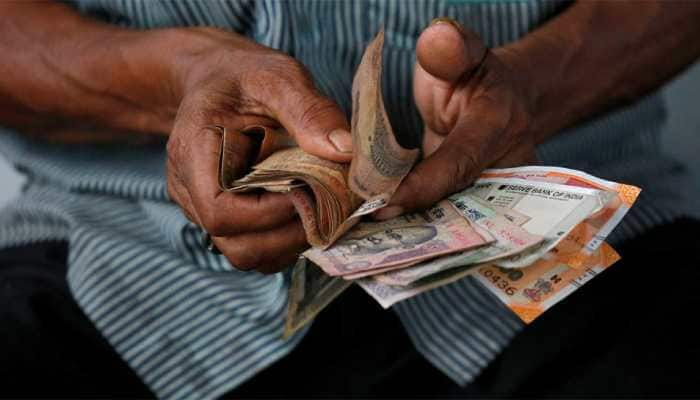All India Quota: What does Centre's quota announcement mean, how will it benefit OBCs and EWS medical students?
Centre’s latest quota move will benefit every year around more than 550 EWS students for MBBS and around 1,000 EWS students for PG medical courses. This decision is also in sync with the significant reforms carried out in the field of medical education since 2014.
- The govt has announced a 27-per cent quota for the OBCs and 10 per cent reservation for the EWS
- The OBCs and EWS will now get the benefit of reservation under the All-India Quota scheme in medical seats
Trending Photos
)
New Delhi: The Central government on Thursday took a significant decision and announced a 27-per cent quota for the OBCs and 10 per cent reservation for the Economically Weaker Section (EWS) category in the All-India Quota (AIQ) scheme for undergraduate and postgraduate medical and dental courses from the current academic year, 2021-22.
This decision will apply to courses like MBBS, MD, MS, BDS, MDS and diploma medical programmes from the current academic year, 2021-22. Around 5,550 seats will be reserved in all for the communities thanks to this order.
This decision was hailed by all top political leaders, including Prime Minister Narendra Modi, who said that the move will benefit nearly 1,500 OBC students in MBBS and 2,500 OBC students in postgraduation and also around 550 EWS students in MBBS and around 1,000 EWS students in postgraduation. "This will immensely help thousands of our youth every year get better opportunities and create a new paradigm of social justice in our country," the PM said.
The Prime Minister, at a meeting held on Monday, had directed the Union ministries concerned to facilitate an effective solution to this long-pending issue. "The present government is committed to providing due reservation both to the backward category as well as the EWS category. The Union government has now taken a historic decision to provide for 27 per cent reservation for OBCs and 10 per cent reservation for EWS in the AIQ scheme," the Health Ministry stated in a statement.
Let’s understand what is the AIQ scheme?
The AIQ scheme was introduced in 1986 under the Supreme Court's directions to provide for domicile-free merit-based opportunities to students from any state aspiring to study in a good medical college in another state.
The all-India quota consists of 15 per cent of the total available UG seats and 50 per cent of the total available PG seats in government medical colleges. Initially, there was no reservation in the AIQ scheme up to 2007.
SC intervention in quota row
In 2007, the Supreme Court introduced 15 per cent reservation for the Scheduled Castes (SCs) and a 7.5-per cent quota for the Scheduled Tribes (STs) in the scheme.
When the Central Educational Institutions (Reservation in Admission) Act became effective in 2007, providing for a uniform 27 per cent reservation to the Other Backward Classes (OBCs), the same was implemented in all the central educational institutions such as the Safdarjung Hospital, the Lady Hardinge Medical College, the Aligarh Muslim University and the Banaras Hindu University.
Accordingly, the number of seats in the medical and dental colleges was increased over the next two years (2019-20 and 2020-21) to accommodate this additional 10 per cent EWS reservation so that the total number of seats available for the unreserved category does not reduce. In the AQI seats, however, this benefit was not extended to the OBCs and EWS until recently.
Reiterating its commitment to the OBCs and EWS, the govt announced "27 per cent reservation for OBCs, 10 per cent reservation for EWS'' in AIQ seats for all the undergraduate/postgraduate medical/dental courses from the current academic year 2021-22.
How will it help the OBC, EWS students?
After the Center’s announcement, OBC students from across the country shall now be able to take the benefit of this reservation in the AIQ scheme to compete for seats in any state. Being a central scheme, the Central List of OBCs shall be used for this purpose.
10 per cent quota for EWS students
In 2019, a constitutional amendment was made to provide 10 per cent reservation for the economically weaker sections. Accordingly, the seats in medical and dental colleges were increased so that unreserved categories do not get affected. But then this category was not included in the All-India Quota scheme. Now, the students belonging to the EWS category will get 10 per cent quota benefit announced by the Centre
The political ramification of the Centre's quota move
The Narendra Modi government's quota decision is also being seen in the context of the upcoming assembly elections in BJP-ruled Uttar Pradesh where the caste factor plays a big role. The ruling BJP had demonstrated the caste calculations earlier this month when it revamped the Union Cabinet with special emphasis on these communities and shared detailed information with media houses regarding the caste and sub-caste of their ministers.
Besides this, Centre’s latest quota move will benefit every year around more than 550 EWS students for MBBS and around 1,000 EWS students for PG medical courses. This decision is also in sync with the significant reforms carried out in the field of medical education since 2014.
During the last six years, MBBS Seats in the country have increased by 56 per cent from 54,348 seats in 2014 to 84,649 seats in 2020 and the number of PG seats have increased by 80 per cent from 30,191 seats in 2014 to 54,275 seats in 2020.
During the same period, 179 new medical colleges have been established and now the country has 558 medical colleges, including 289 government and 269 private institutions.
Stay informed on all the latest news, real-time breaking news updates, and follow all the important headlines in india news and world News on Zee News.
Live Tv







)
)
)
)
)
)
)
)
)
)
